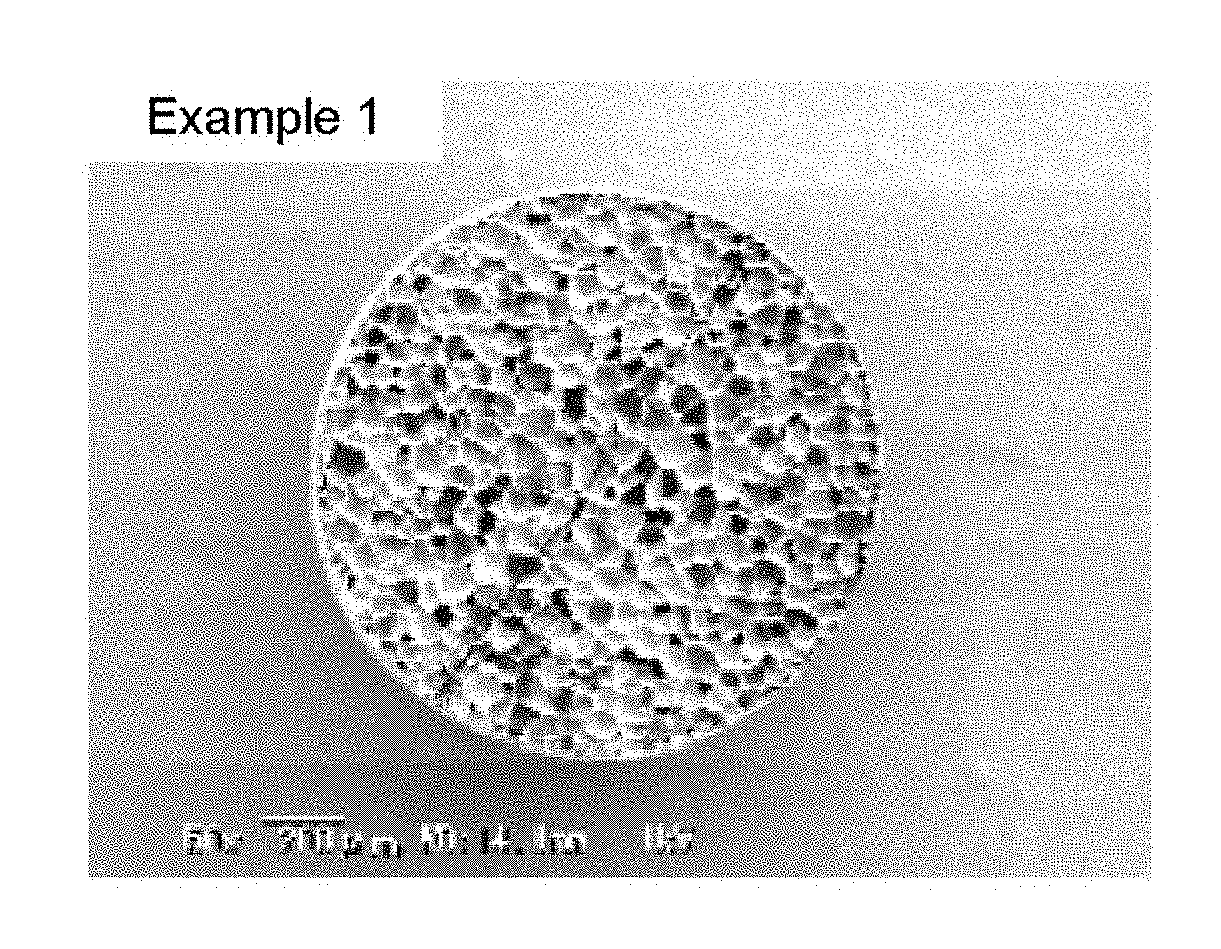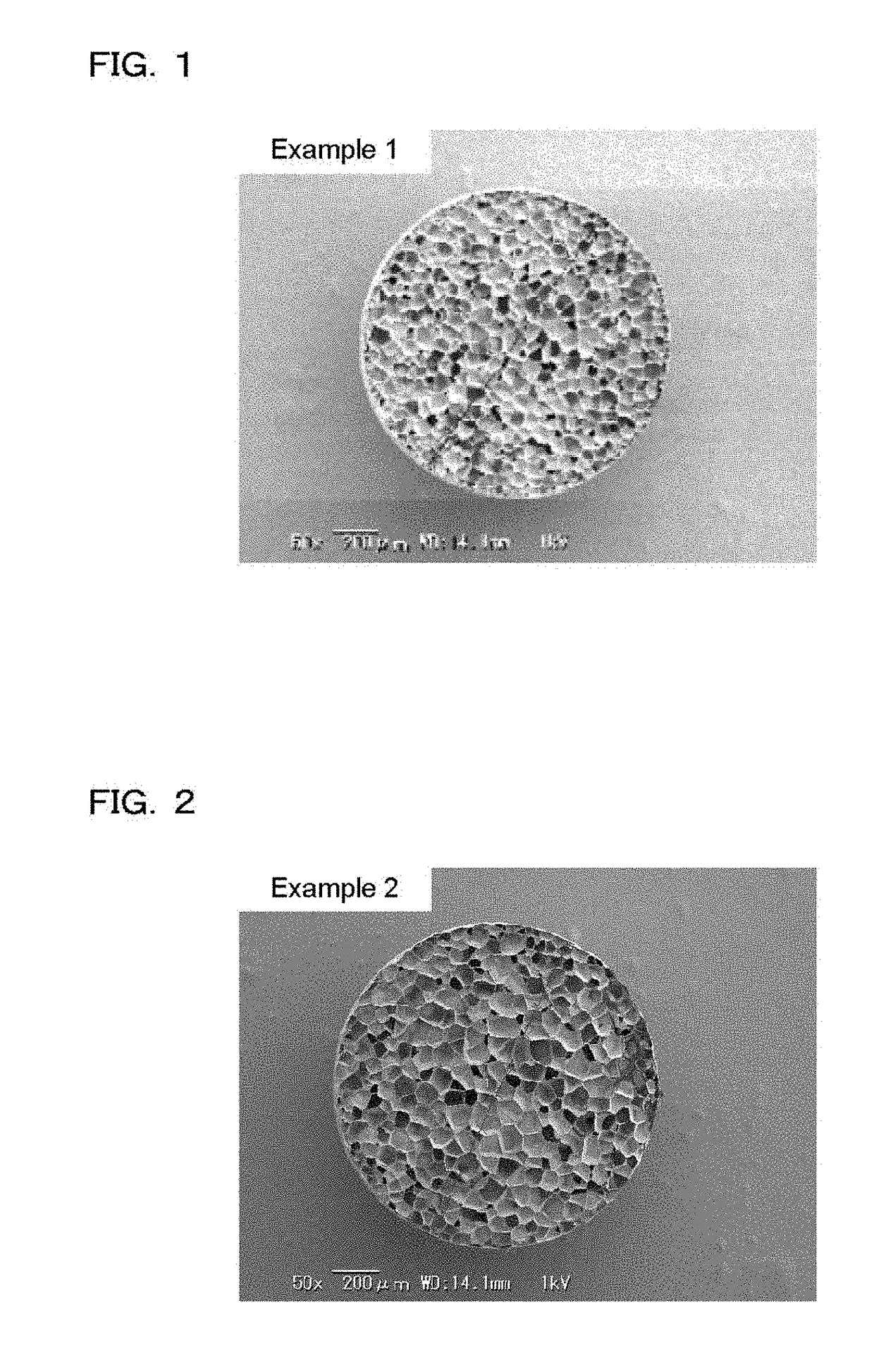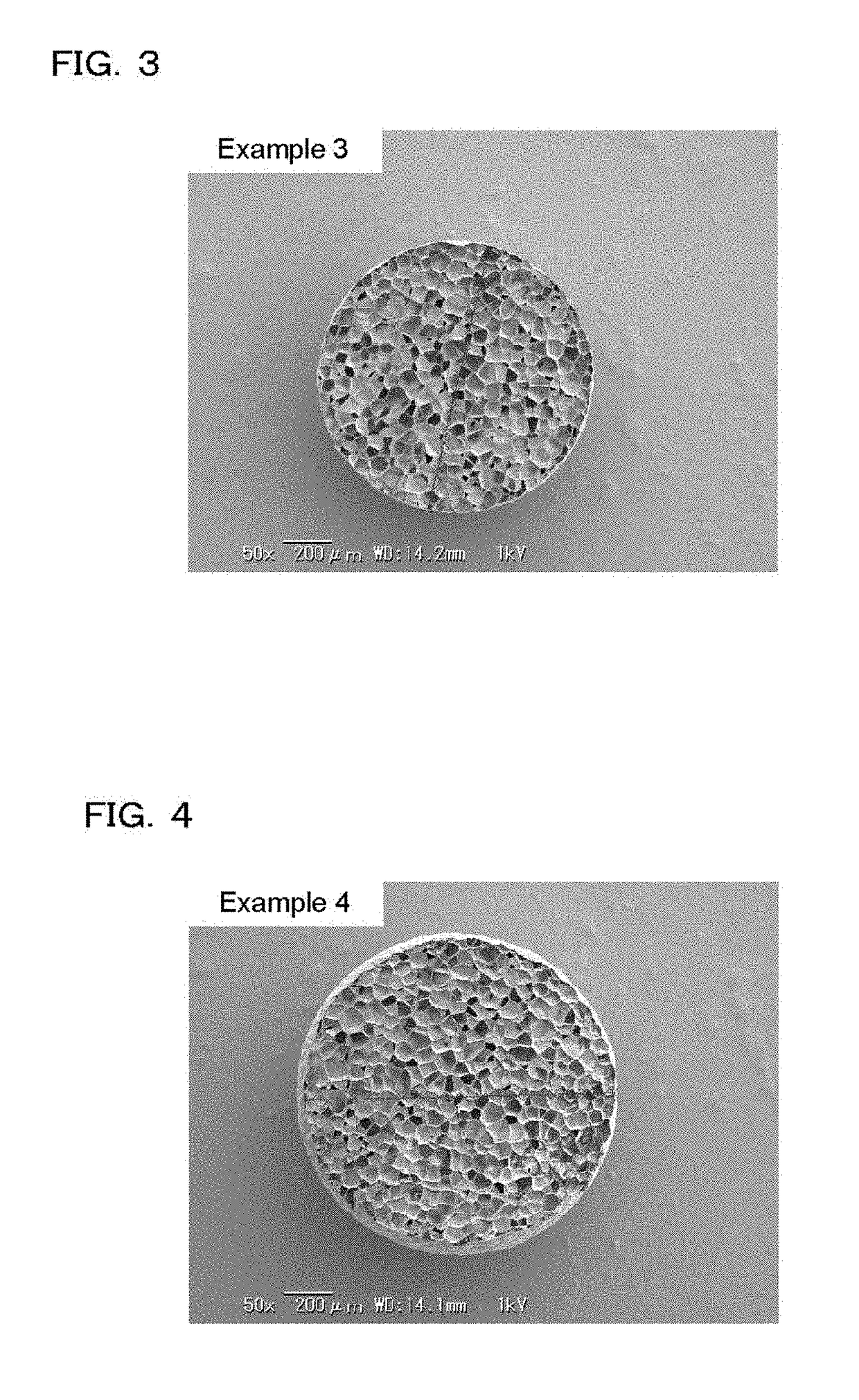Expandable acrylic resin bead, expanded acrylic resin bead, and expanded acrylic resin beads molded article
a technology of acrylic resin beads and acrylic resin beads, which is applied in the field of expandable acrylic resin beads, and expanded acrylic resin beads molded articles, can solve the problems of large amount of soot produced and pinholes to be formed inside the cast, and achieve excellent castabilities, reduce the production rate of thermal decomposition gas, and reduce the effect of soot production
- Summary
- Abstract
- Description
- Claims
- Application Information
AI Technical Summary
Benefits of technology
Problems solved by technology
Method used
Image
Examples
example 1
[0052]Hereinafter, expandable resin beads, expanded beads, expanded beads molded articles according to examples will be described. First, the expandable resin beads were produced in the following way.
[0053]First, 700 g of deionized water, 1.3 g of a suspension agent (tricalcium phosphate), 0.1 g of a surfactant (sodium dodecyl diphenyl ether disulfonate), and 1.1 g of an electrolyte (sodium acetate) were fed into an autoclave equipped with a stirrer, the inner volume of the autoclave being 3 L.
[0054]1.3 g of a polymerization initiator A, 0.7 g of a polymerization initiator B, 7.5 g of a plasticizer, and 0.4 g of a chain transfer agent (in particular, NOFMER MSD manufactured by NOF CORPORATION) were dissolved in a mixture of 350 g of methyl methacrylate, 135 g of styrene, and 15 g of n-butyl acrylate. As the polymerization initiator A, benzoyl peroxide (in particular, NYPER BW manufactured by NOF CORPORATION; a powder diluted with water) was used, as the polymerization initiator B, t...
examples 2 to 4
[0061]Expandable resin beads, expanded beads, and expanded beads molded articles were produced in the same manner as in Example 1, except that the conditions were varied as shown in Table 1 described below. Scanning electron microscope photographs (at a magnification of 50 times) of cross-sections of the expanded beads according to Examples 2 to 4 are shown in FIGS. 2 to 4, respectively.
PUM
| Property | Measurement | Unit |
|---|---|---|
| mol % | aaaaa | aaaaa |
| mol % | aaaaa | aaaaa |
| mol % | aaaaa | aaaaa |
Abstract
Description
Claims
Application Information
 Login to View More
Login to View More - R&D
- Intellectual Property
- Life Sciences
- Materials
- Tech Scout
- Unparalleled Data Quality
- Higher Quality Content
- 60% Fewer Hallucinations
Browse by: Latest US Patents, China's latest patents, Technical Efficacy Thesaurus, Application Domain, Technology Topic, Popular Technical Reports.
© 2025 PatSnap. All rights reserved.Legal|Privacy policy|Modern Slavery Act Transparency Statement|Sitemap|About US| Contact US: help@patsnap.com



